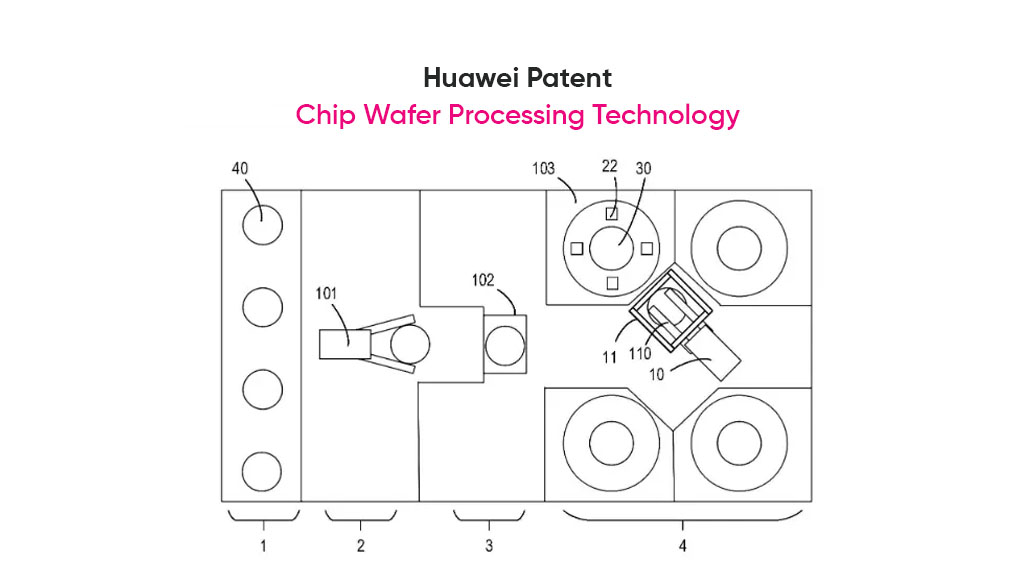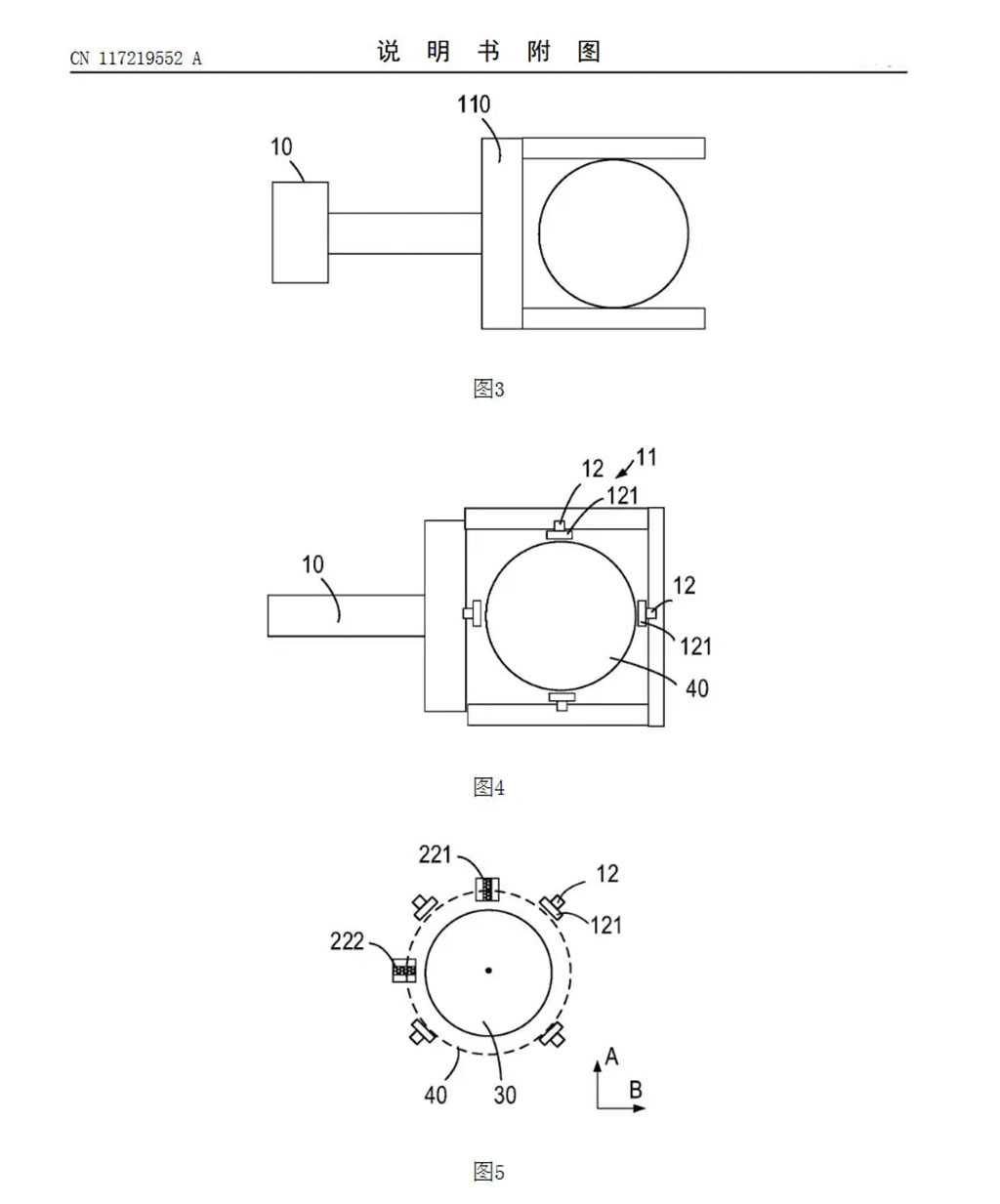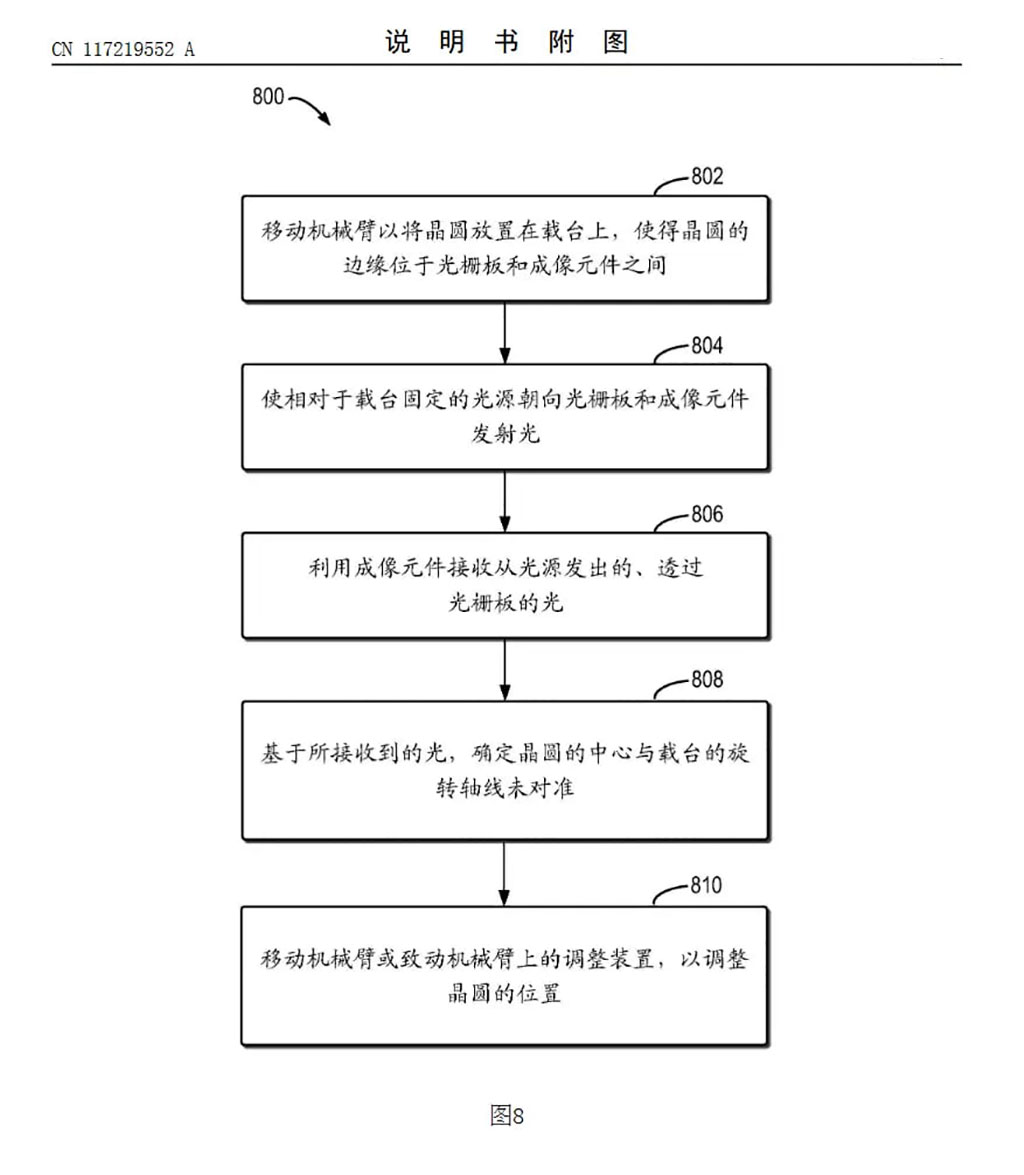
Huawei has applied for a new patent in the chip wafer processing technology to enhance the wafer alignment efficiency. The patent is entitled ‘Wafer Processing Device and Wafer Processing Method’ with an application number CN117219552A.
Huawei is already in rumors for building its own chip wafer fab manufacturing with the help of SMIC. Meanwhile, the new patent stamps confirmation and suggests that these speculations may turn out to be true in the time ahead.
Speaking of the patent application, Huawei focuses on improving the chip wafer alignment efficiency and accuracy. It further shows a list of equipment required in the wafer processing. Eventually, the wafer processing device counts:
- Wafer carrier that can spin around the rotation axis
- Mechanical arm with robotic hands to handle and place wafers on the carrier
- Controller
- Calibration component

The calibration component includes a grating plate fixed relative to the carrier, a light source fixed to the grating plate, and an imaging element on the mechanical arm to receive light from the source, transmitted via the grating plate.
Meanwhile, the controller handles the mechanical arm and adjusts the position of the wafer, depending on the light detection by the imaging element. Now let’s look at the functioning aspects.
The grating plate and imaging element rest on opposite sides of the plane where the upper surface of the wafer carrier is located. Consequently, when the carrier holds the wafer, the grating plate and imaging element along with the upper surface help to carry the wafer and conduct processing.
Together, these devices and methods aim to improve wafer alignment efficiency and precision. As per the previous report, Huawei is likely to establish a wafer fab manufacturing factory in Shenzhen to meet the company’s requirements, and the respective patent shows the beginning of a new project.


Huawei issued new patent to enhance chip wafer alignment efficiency
Huawei has applied for a new patent in the chip wafer processing technology to enhance the wafer alignment efficiency. The patent is entitled ‘Wafer Processing Device and Wafer Processing Method’ with an application number CN117219552A. Huawei is already in rumors for building its own chip wafer...
